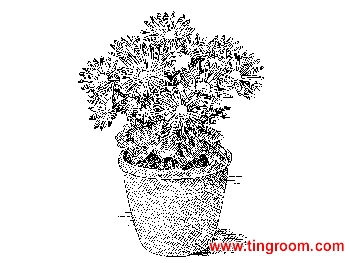清洁空气4观叶植物
These hardworking houseplants can sweeten every breathyou take.
Put Your Plants to Work
In the early 1980s, when NASA researchers were lookingfor ways to purify the air inside the space pods of thefuture, they didn't just look to engineer a pricey, high-techfiltering system. They also turned to the humblehouseplant. As the months grow colder and darker, drivingyou indoors, take a cue from NASA and put your plants towork absorbing the air pollutants lurking in your home or office. O asked Bill Wolverton, PhD, who helpedpioneer the NASA studies, to select a trio of potted powerhouses. (For freshest results, Wolvertonrecommends covering soil with a one-inch layer of pebbles or decorative gravel, which cuts the risk of moldand bacteria.)
Palms (bamboo, lady, and areca varieties)
Palms not only are top performers in removing airborne toxins but can add up to a liter of moisture to the airper day—perfect for counteracting the desert-dry effects of indoor heating systems.
Rubber Plant
This thirsty, shiny mainstay is ideal for rooms that don't receive much sunlight (and aren't most rooms likethat in November?). It's particularly adept at filtering formaldehyde, which is found in many adhesives andfloor coverings.
Florist's Mum
In cheerful reds, pinks, and yellows, this flowering fall plant is an excellent filter of airborne chemicals suchas benzene (emitted by gasoline, ink, paint, and pesticides) and ammonia (common in cleaning supplies).
ON THE UPSIDE
The Boskke Sky Planter is built to hang upside down from a ceiling hook and uses a reservoir system torelease more water when soil is dry and less when it's wet. (Don't worry—the dirt stays put!) The result: Itrequires up to 80 percent less H 2 0 than its conventional counterparts, and needs refills as infrequently astwice a month—saving you water and time, not to mention floor space.



